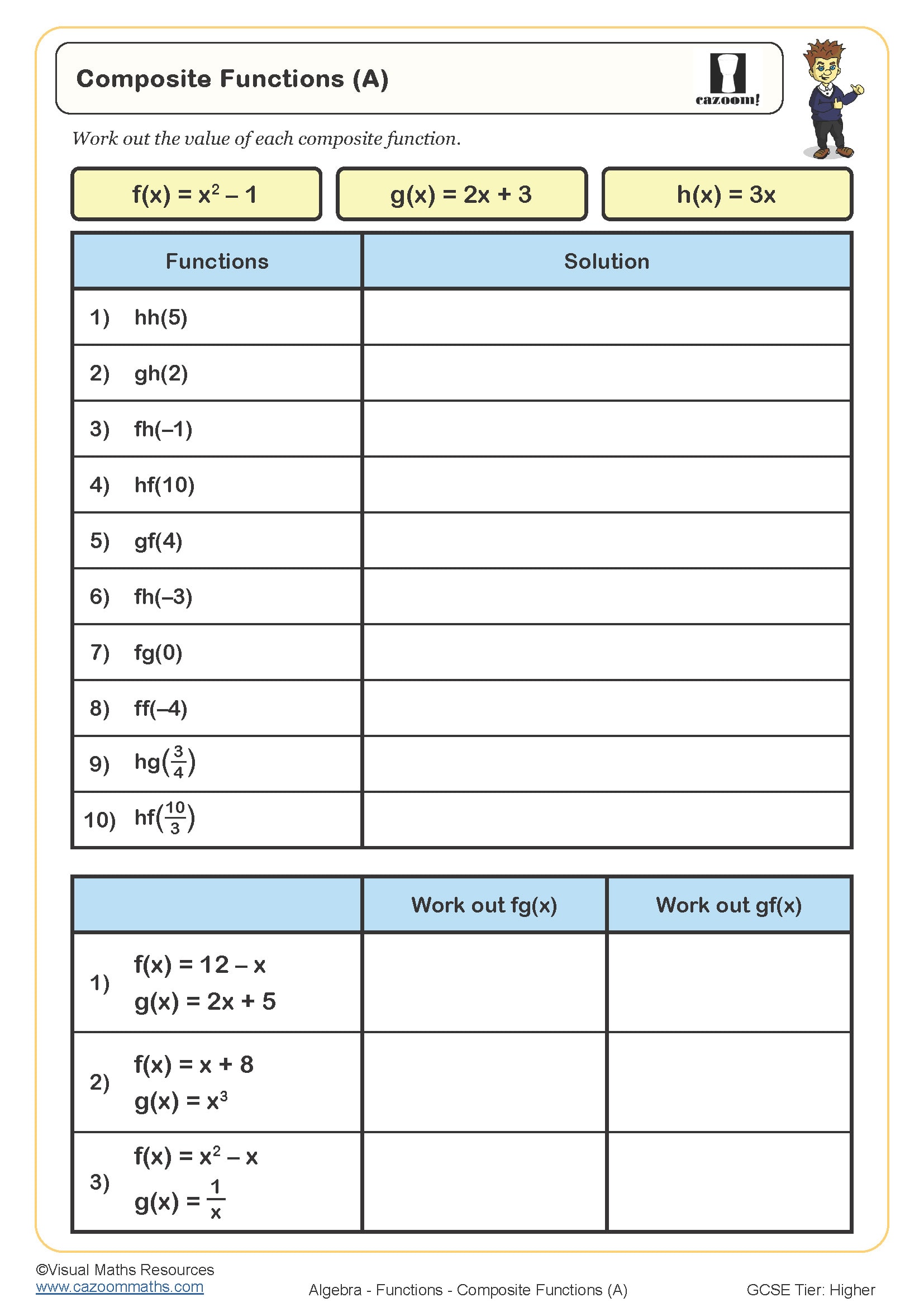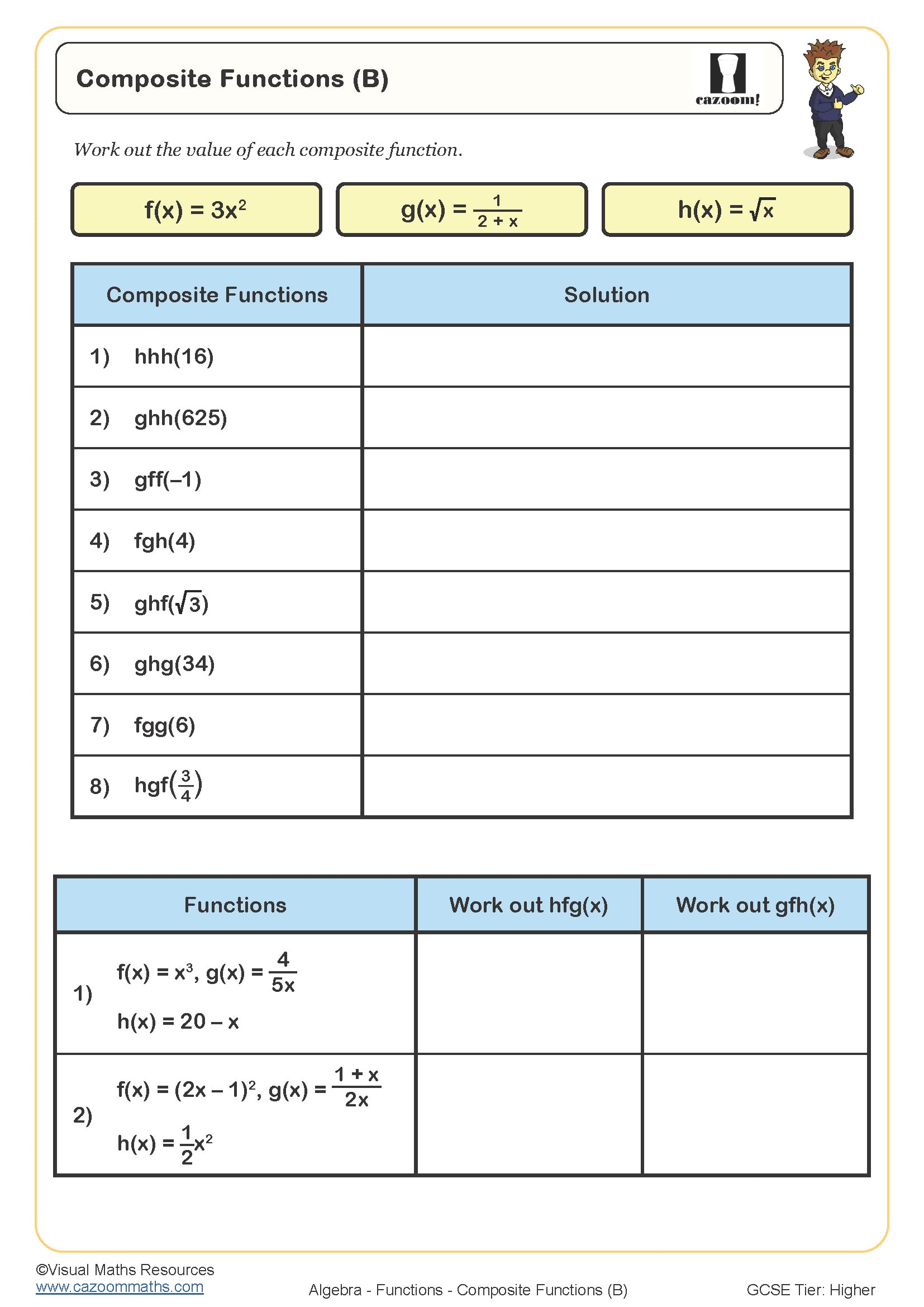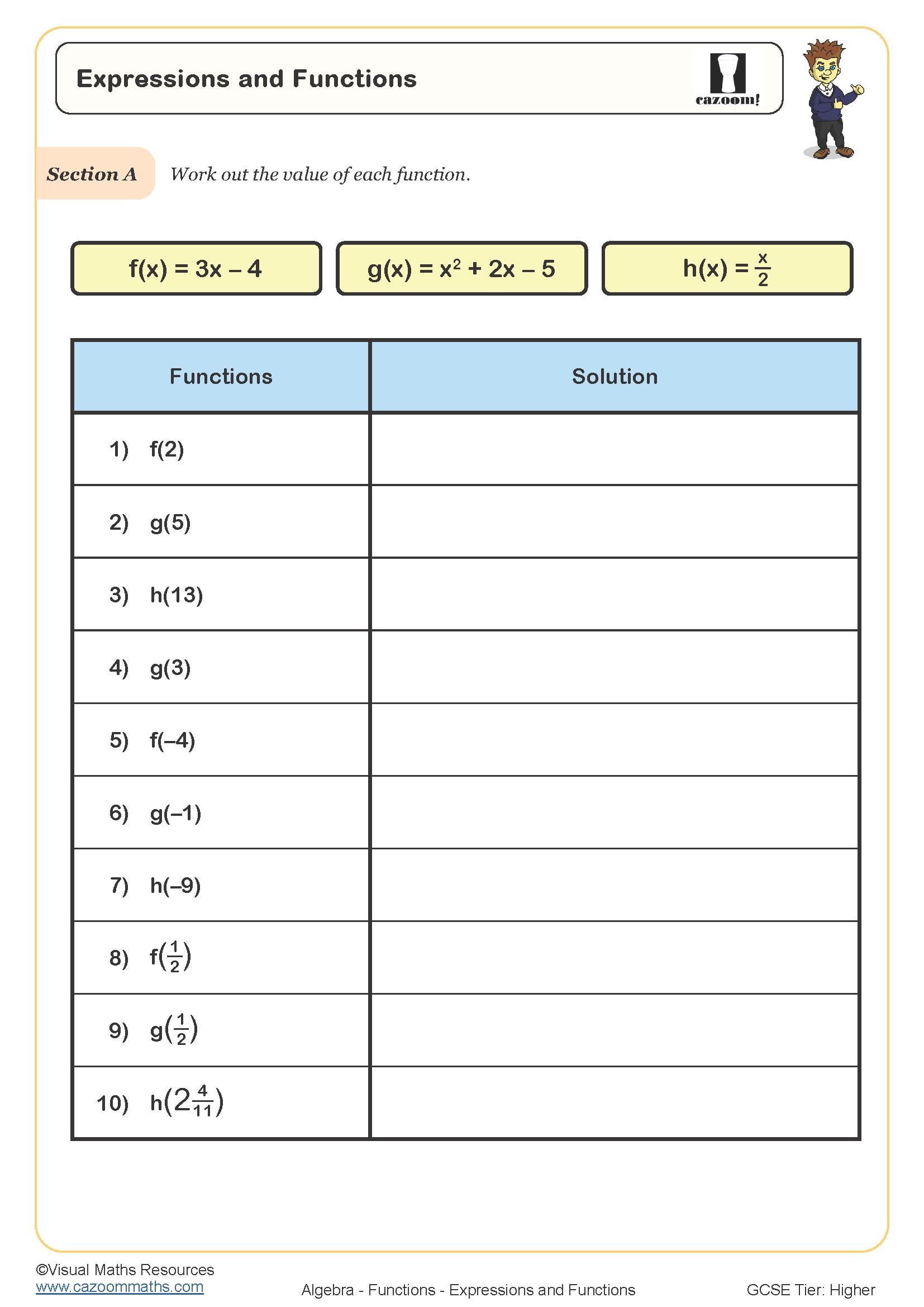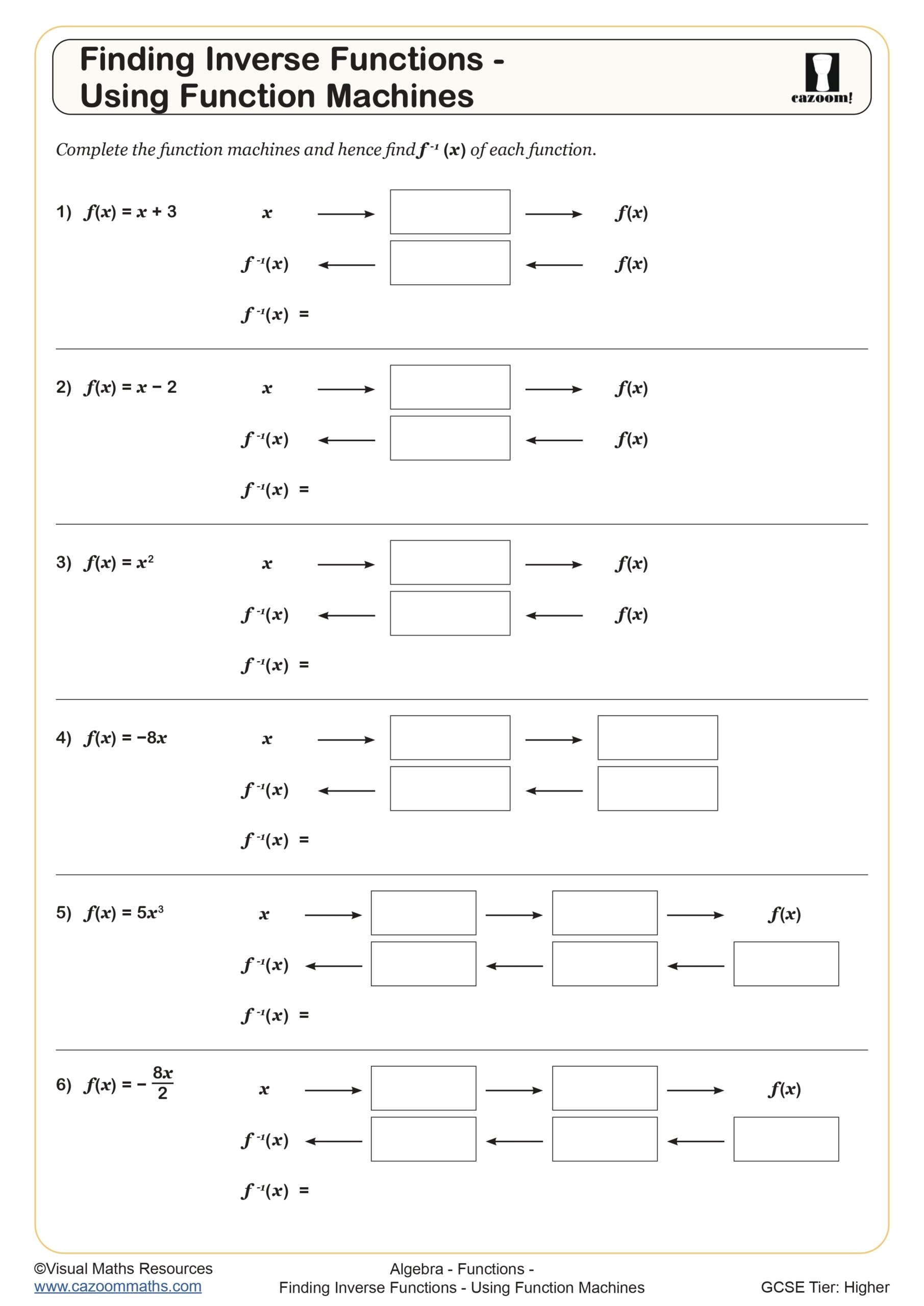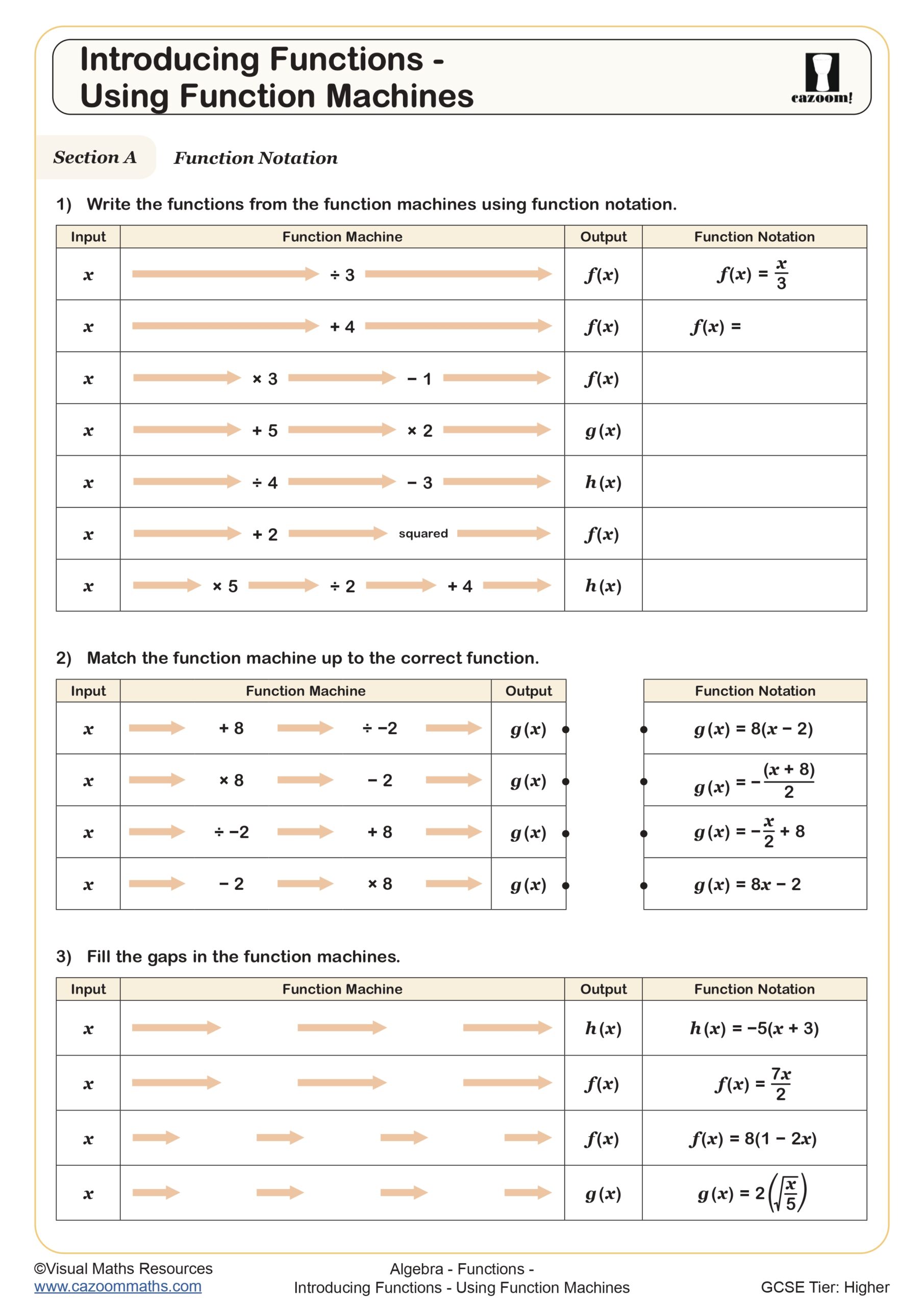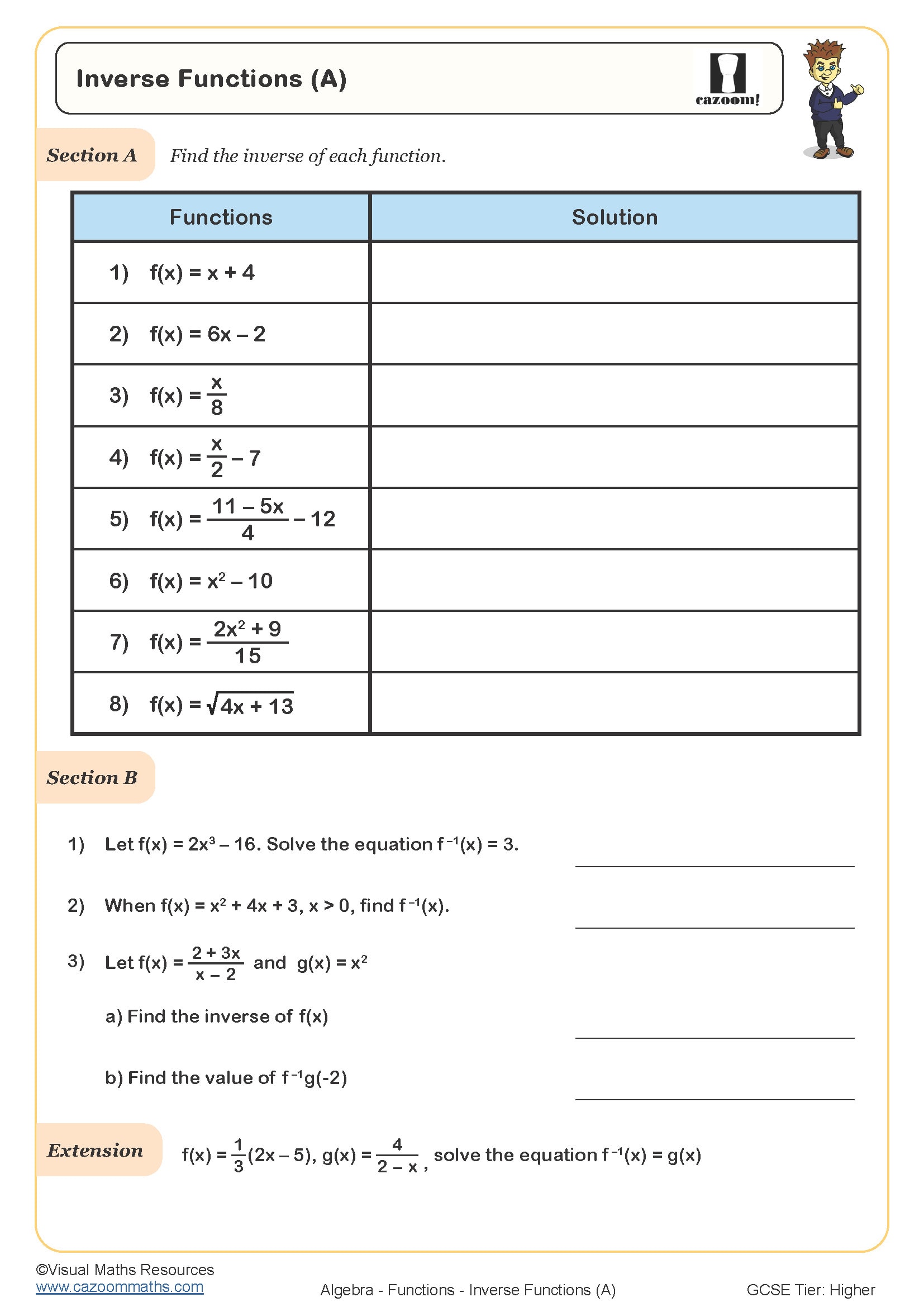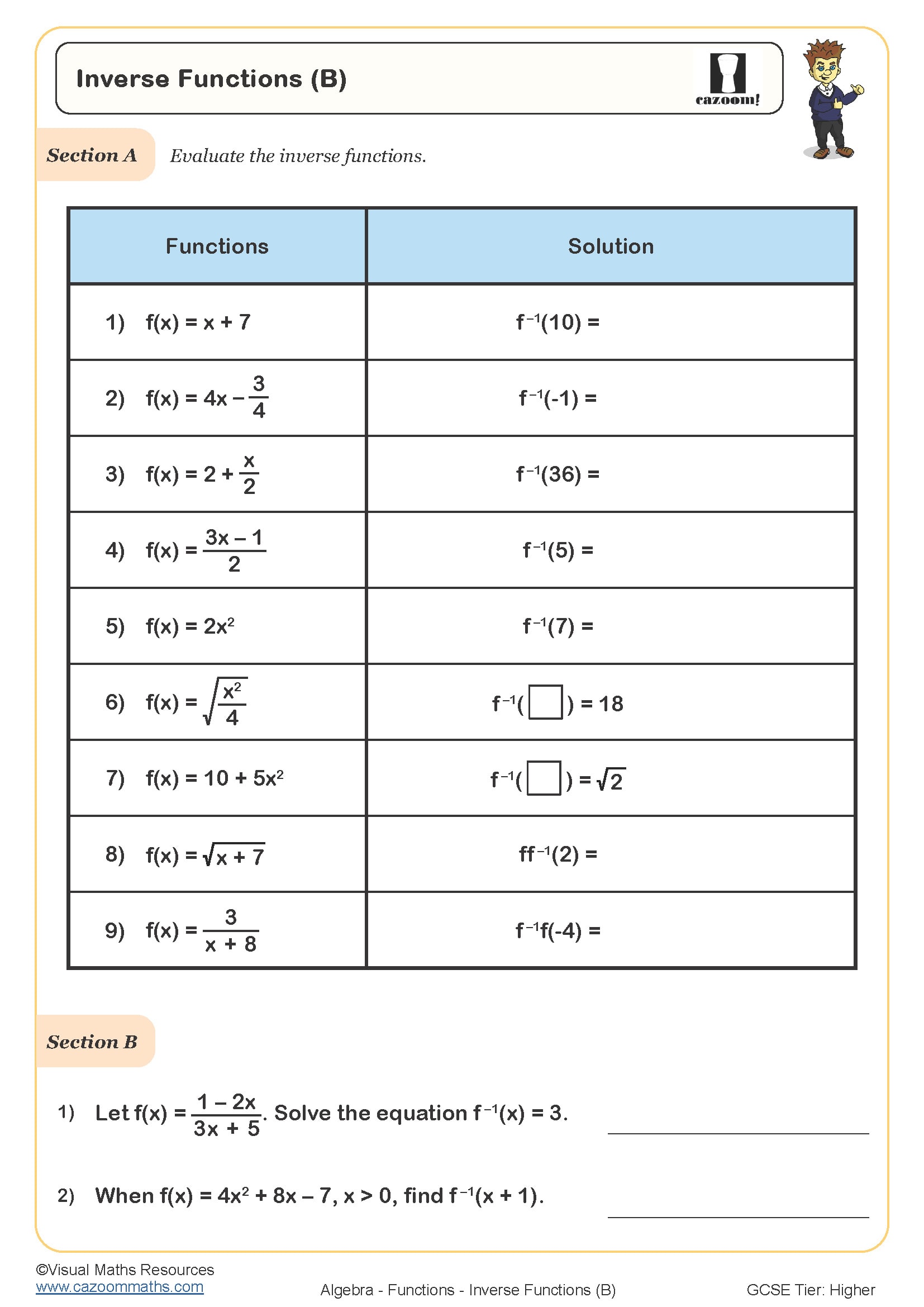Year 11 Functions Worksheets
Essential Year 11 Functions Worksheets PDF Downloads with Step-by-Step Solutions
Here's the thing about finding quality function resources – most worksheets out there either oversimplify the concepts or jump straight into the deep end. These function worksheets strike that perfect balance we've been looking for. They cover everything from basic function notation through to composite and inverse functions, with detailed solutions that actually show the thinking process (not just the final answers).
What Mathematical Skills Are Covered in These Functions Worksheets?
We've packed quite a lot into these worksheets! Students start with fundamental function notation and gradually progress through domain and range, function transformations, and composite functions. The worked examples are particularly popular with our students – they really help bridge that gap between "I understand the theory" and "I can actually solve these problems." Each functions worksheet includes real exam-style questions, too.
Why Year 11 Students Need Targeted Functions Practice Worksheets
We've noticed that students who struggle with functions often haven't had enough structured practice with the notation and problem-solving methods. Regular practice with these function worksheets builds that essential confidence before GCSE exams and A-Level study. Here's what consistent practice actually delivers:
• Improved fluency with function notation and mathematical language
• Better understanding of domain, range, and function behaviour
• Stronger problem-solving strategies for composite and inverse functions
• Increased confidence tackling exam-style function questions
• Solid foundation for A-Level further mathematics study
Real-World Applications Where Students Use Function Skills
Students always ask, "When will I ever use this?" – and functions are actually everywhere once you start looking! We love showing how function concepts appear across physics (particularly in mechanics and waves), computer science programming, and even economics. It's actually quite satisfying when students spot function relationships in their other subjects and connect the dots.
• Physics: Velocity-time graphs and displacement functions
• Computer Science: Programming algorithms and data transformations
• Economics: Supply and demand curves and cost functions
• Engineering: Signal processing and system modelling
• Statistics: Probability distributions and regression analysis
• Geography: Population growth models and climate data analysis
